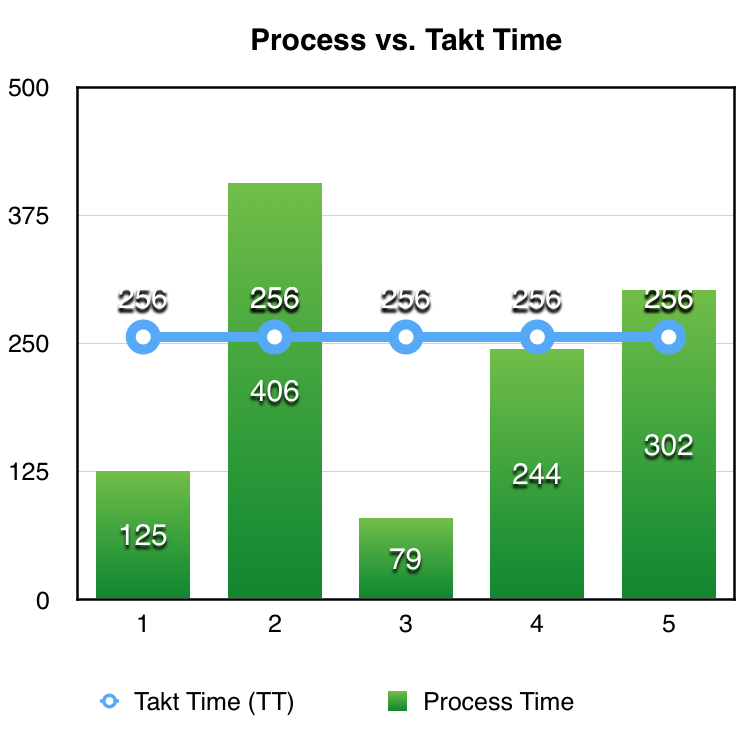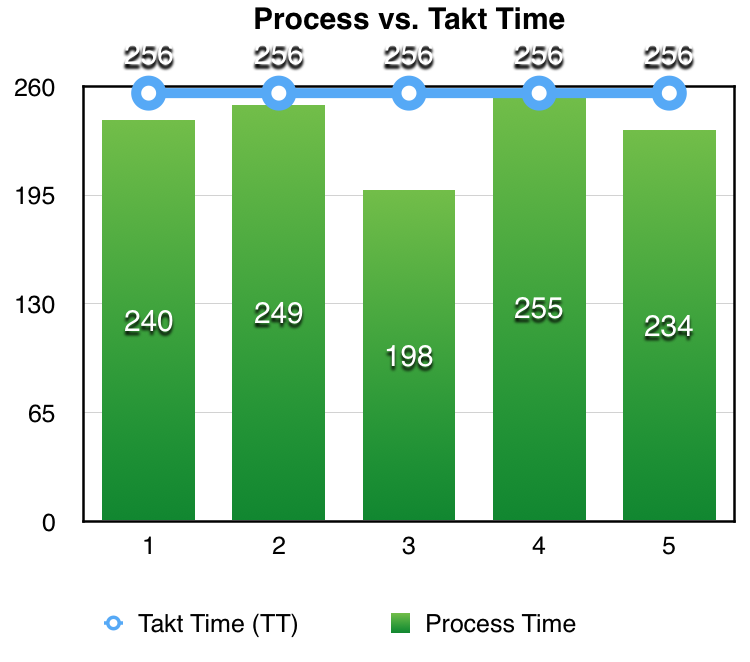
Toyota Principle #4 – Level out the workload (Heijunka); Work like the tortoise, not the hare.
Consider the following process:

Initial (Unbalanced) Process
To meet customer demand, you calculate that you need to make a part every 256 seconds (Takt Time). Step 1 only takes 125 seconds, well under Takt Time (TT). Step 2, however, takes 406 seconds, well over TT.
Let’s pause here. Once you violate TT anywhere in the process, you are no longer capable of meeting customer demand using only straight time. So, we’ve got a real problem.
What Heijunka (level-loading, or balancing) would do is to get all the processes under TT; and, it would try to balance each worker’s load.
How?
Job one is to conduct a Kaizen to eliminate any waste. While we’re doing that, we will also look for any work aids that will shorten the tasks; e.g. a jig that holds the part while performing a difficult operation, or a poka yoke device that renders the process incapable of making a mistake, or a better layout of tools or hardware to eliminate worker searching.
Once that’s done, we break down each process step into smaller component tasks, and time each. We then shift burden (process tasks) to make each step take a similar amount of time.

Balanced Process
Note that, in the 2nd chart, all steps are now under TT and we have a much more level, or balanced, process.
We now know we can meet customer demand, but is that all we did?
Think of the impact on our people. Back when we started, how do you think the worker at step #2 felt? Overwhelmed? Defeated? Put-upon?
How did other workers feel toward Operator #2? Resentful? The operator, after all, was keeping them from meeting their daily quota; or, were they happy because the length of step #2 allowed everyone else to coast and still get overtime?
How did managers perceive the operator at step #2? Was he or she their least favorite person? Operator #2, after all, constantly caused the manager to overshoot their labor budget. Is it not human nature to find fault with someone that consistently makes us look incompetent?
Now ask yourself: what ability did Operator #2 have to level-load the process? Virtually none. This was a SYSTEMIC problem (READ: problem with a system), and managers own virtually all systems; hence, level-loading this process was a management problem all along, and only they had the power to resolve it.
Keep that in mind next time you look to lay blame at a subordinate’s doorstep.

